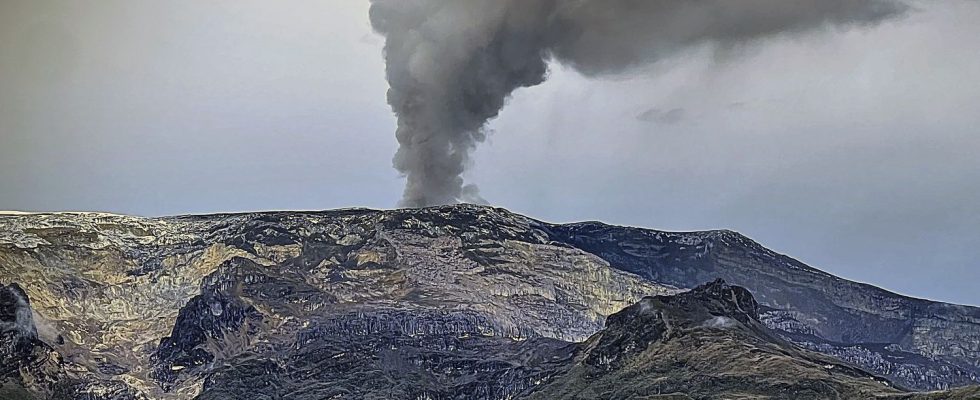In recent days, experts have recorded an increase in seismic activity inside the crater. The authorities have for several weeks decreed the area in “situation of natural disaster” to be able to evacuate the inhabitants, if necessary.
For the moment, we observe smoke coming out of the crater named “Arenas”. Experts say that in recent hours, the tremors inside have increased. This means that the rock inside the volcano is fracturing. Outside, several residents of nearby towns claim to have seen ash rain.
>> Colombia: FARC dissidents agree to negotiate, a step towards “total peace”?
The authorities are already preparing possible evacuations of the population. They are assessing the capacity in temporary shelters and possible evacuation routes. Several simulations were organised. The orange alert was declared on March 30 and it had been 11 years since the Colombian geological services had not used this type of alert. This is to say the concerns of the authorities.
Emission of the volcano’s ceniza Nevado del Ruiz, April 18 at 07:11 a.m., altitude of the column 1800 m from the top of the volcano, dispersión al suroriente #SGCVolcanes pic.twitter.com/2MQ9DT7txM
— Servicio Geologico Colombiano (@sgcol) April 18, 2023
For its part, the Tolima Hospital Network is on red alert, which has triggered emergency plans throughout the department, especially in the 14 municipalities that are part of the Nevado Ruiz volcano’s area of influence. According to the Colombian geological service, the orange alert can be maintained for days or even weeks for safety. President Gustavo Petro also extended the national disaster decree to deal with a possible eruption of Nevado del Ruiz.
The fatal memory of 1985
If the authorities are cautious, it is because this is not the first time that the volcano threatens. Its last eruption dates back to November 13, 1985. It generated what is called here the “Armero tragedy”. The eruption of the volcano had caused the melting of nearly 10% of the mountain glacier, as told by this archive of Le Monde. The mudslides, earth and debris had then descended the slopes of the volcano at 60 km / h until reaching the town of Armero which was 50 km from the volcano. Everything was destroyed. More than 20,000 out of 29,000 residents died that day.
This eruption took place after 69 years of inactivity of the volcano. It had surprised the neighboring villages. However, at the time, the government had received warnings from several volcanological organizations, and this, as soon as the first signs of volcanic activity appeared in September 1985. Which means two months before the eruption. But no evacuation had been ordered.
This tragedy is widely known, as videos and photos have gone viral, including those of Omayra Sanchez, a teenage victim of the tragedy, who was trapped for three days in mud and debris before dying. This time, the Colombian government is very attentive and responsive. Everything is done to prevent history from repeating itself.
